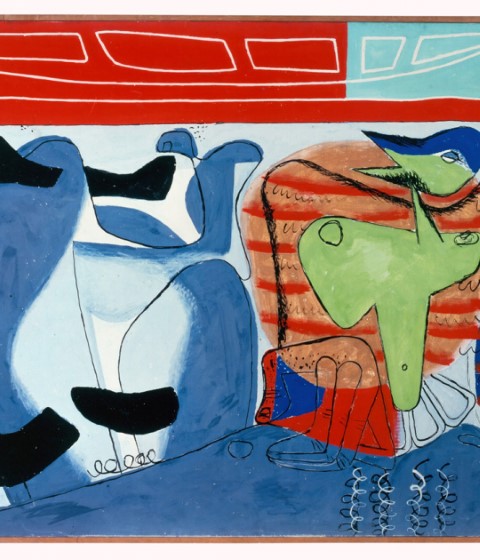"Secret Cities: The Architecture and Planning of the Manhattan Project" exhibition is exhibited in National Building Museum. The development of the atomic bomb—the result of a military initiative known as the Manhattan Project —is one of the most consequential milestones in the history of science. The project laid the foundation not only for the Cold War, which raised the specter of global annihilation, but also nuclear power, as well as radiological medical applications that have saved countless lives.
The Manhattan Project owed its success not only to brilliant scientific work, but also to significant achievements in architecture, engineering, planning, and construction. The effort to produce the world’s first nuclear weapon would ultimately involve hundreds of thousands of people and require large-scale, highly secure facilities. In order to accommodate this vast enterprise, the U.S. government built three new cities from scratch: Oak Ridge, Tennessee; Hanford/Richland, Washington; and Los Alamos, New Mexico.
The speed and scale of construction of these cities were in many ways unprecedented. Influenced by the planned community movement and heavenly reliant on prefabricated construction, these cities were in many ways proving grounds for merging ideas about design and planning. Begun in late 1942, they collectively housed a total of more than 125,000 people by the end of the wr in August 1945. Yet these cities appeared on no maps, and their existence was a remarkably well-maintained secret until the bombing of Hiroshima.
Secret Cities will inevitably touch on difficult topics such as the use of nuclear weapons in combat, but the focus is on the communities that the government built to support the Manhattan Project. It examines the cities as case studies in modern urban planning and building technology, while revealing the distinct way of life that emerged at each site. the exhibition also explores the architectural and planning legacy and engineering firms, as exemplified by Skidmore, Owings & Merrilll (SOM), which oversaw the design of Oak Ridge. The exhibition also explores the postwar development of the three cities, which remain important centers of scientific research today.
Description of project by The National Building Museum
In the fall of 1942, less than a year after the United States was drawn into World War II by the Japanese attack on Pearl Harbor, the U.S. Army Corps of Engineers quietly began acquiring vast tracts of land in remote areas of three states. The few residents of these areas were summarily evicted and their houses demolished. Soon, thousands of young workers arrived from far and wide, initially occupying tents and other makeshift shelters within the newly designated military reservations.
Shielded from public view by natural barriers and security fences, the workers quickly erected hundreds of buildings, ranging from prefabricated houses to industrial structures of unprecedented scale. As they did so, thousands more residents arrived in a near-continuous stream. By the end of the war, a total of more than 125,000 people lived in the three cities that had been built from scratch on these sites. Yet these cities appeared on no maps, and the federal government did not acknowledge their existence. Unfathomable quantities of supplies were delivered, but very little seemed to come out, adding to the air of mystery surrounding these “Secret Cities”.
That mystery unraveled on August 6, 1945, when the U.S. dropped an atomic bomb on Hiroshima, Japan, and President Harry S. Truman publicly revealed the purpose of the sites now known as Oak Ridge, Tennessee; Los Alamos, New Mexico; and Hanford/Richland, Washington. In roughly two and a half years, the Manhattan Project—so named because it was managed by the Army Corps’s Manhattan Engineer District in New York—had produced a weapon of previously inconceivable destructive force. While the ethics and strategic necessity of the decision to use such a weapon in combat are still fiercely debated, there is no question that this initiative was one of the most significant milestones in the history of scientific research and development.
The Manhattan Project would not have been possible without the extraordinary achievements in architecture, engineering, and planning that yielded three entirely new cities in a remarkably short time. Built in the early years of the modern movement, these cities reflected cutting-edge ideas about town planning, mass housing, civil and mechanical engineering, and modular construction. They became important proving grounds for the large-scale suburban development that would dramatically alter the physical and cultural landscape of the nation in the post-war era.
Secret Cities examines the innovative design and construction of Oak Ridge, Hanford, and Los Alamos, tracing their precedents in the Bauhaus and other early modern schools of architectural thought. It looks at daily life within the cities and how it was shaped by their physical form, illuminating the social stratification and segregation that were still evident in these cities despite the high-minded principles underlying their design.
The exhibition addresses each city’s development since the conclusion of the Manhattan Project, and their continuing importance as centers of research and technology, now largely devoted to non-military purposes.









































